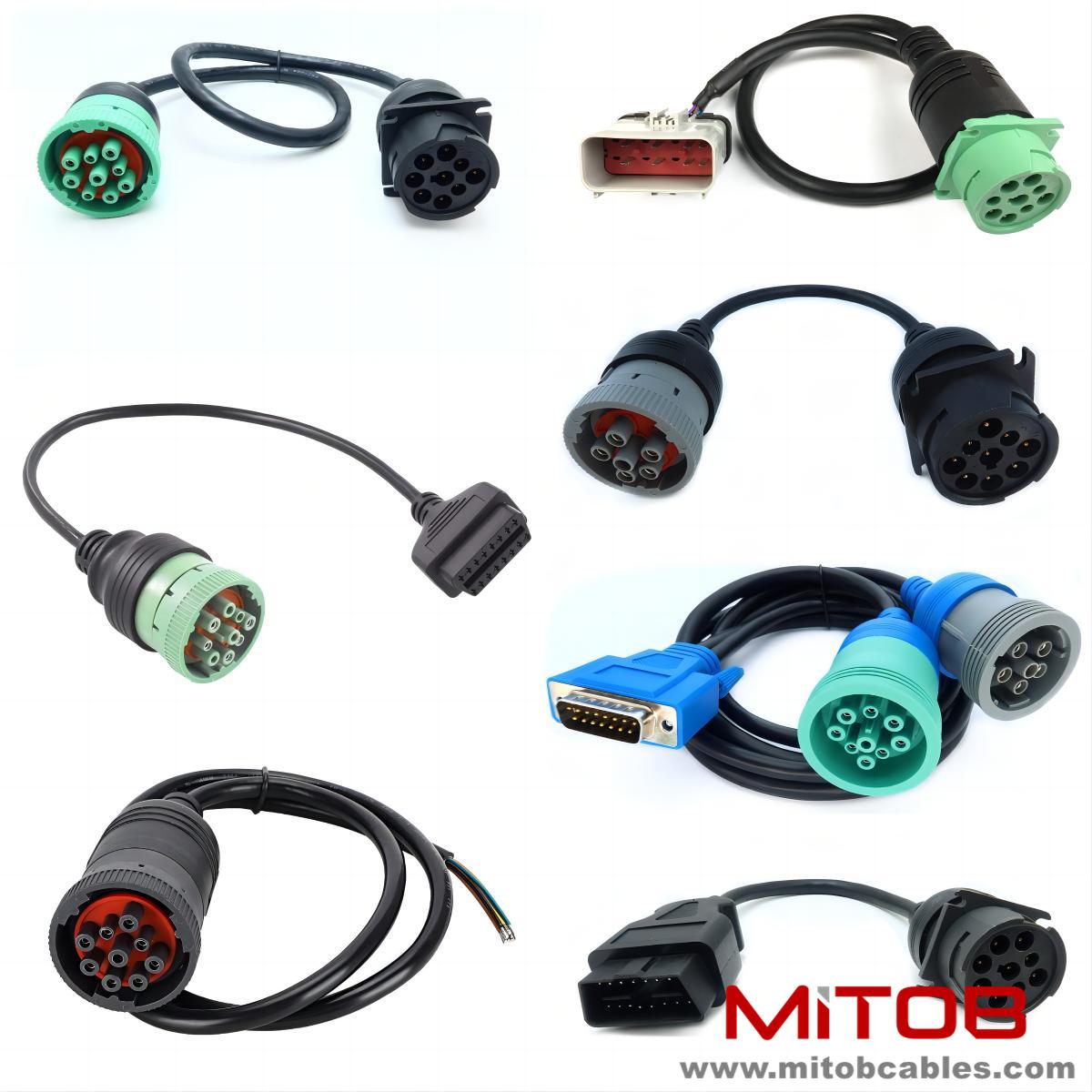Working principle and interface characteristics of J1939 to J1708 cable
1、 Working principle
J1939 and J1708 are two different vehicle network protocols, and their core differences are reflected in the physical layer, data link layer, and transmission rate. The J1939 to J1708 cable achieves bidirectional communication through a protocol conversion chip. The specific process is as follows:
Protocol parsing and conversion
J1939 side: Receive 29 bit identifier messages based on CAN bus (ISO 11898), parse parameter group number (PGN), priority, source address and other fields.
J1708 side: Convert the parsed data into RS-485 level signals, reassemble the message in J1708's 8N1 format (1 start bit, 8 data bits, 1 stop bit), and add MID (message identifier) and checksum.
Reverse transmission: After receiving the serial data from J1708, extract the MID and data fields, and repackage them into the CAN frame format of J1939.
Rate Adaptation
The transmission rate of J1939 is 250kbps, while J1708 is only 9600bps. During the conversion process, rate matching needs to be achieved through hardware buffers or software algorithms to avoid data loss.
Electrical isolation
To prevent electrical interference between different protocols, optocouplers or magnetic coupling isolation modules are usually integrated inside the cable to ensure electrical independence between J1939 and J1708.

2、 Interface features
physical interface
J1939 end: Using a 9-pin D-Sub connector, the pin definitions are as follows:
Pin 1: CAN-H (yellow wire)
Pin 2: CAN_L (green wire)
Pin 3: Shielding layer (ground)
J1708 terminal: The pin function is:
Line A: Data positive pole (logic high level)
B-line: Data negative pole (logic low level)
Contact: Kevin
Phone: 0086-18823374992
E-mail: kevin@mitobcable.com
Whatsapp:
Add: Bld B2, Floor7 , Xinghe Zhongkai AI Industrial Park, Zhongkai High-tech Zone, Huizhou,China